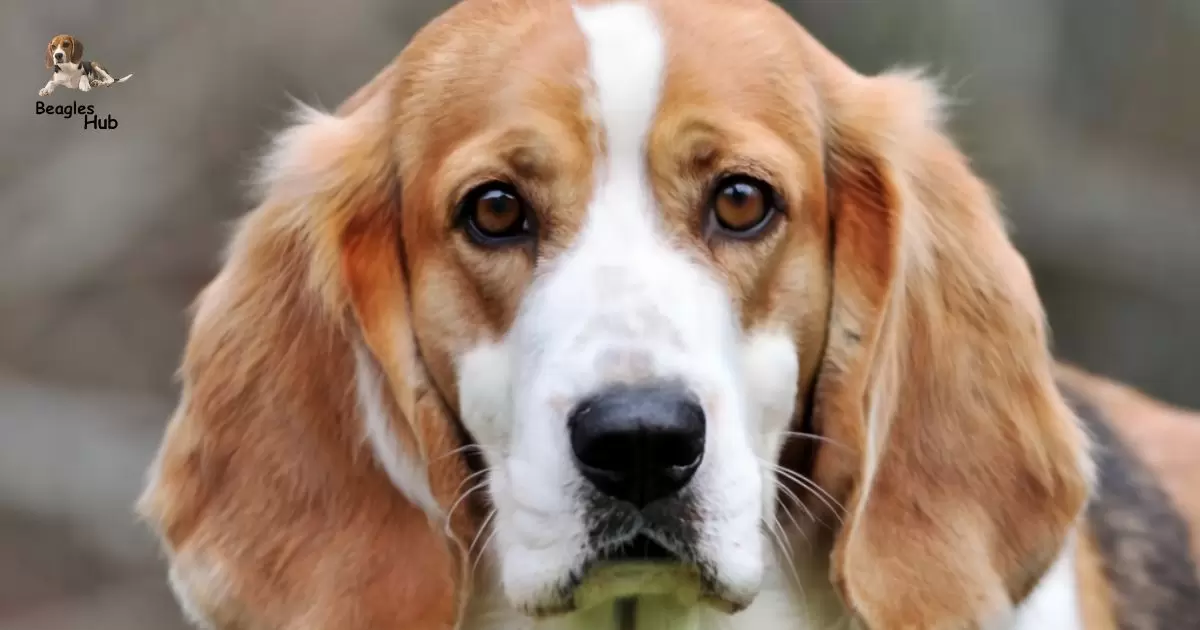Beagles are one of the most popular dog breeds worldwide known for their compact size, friendly nature, and hunting prowess. However, many people are unsure about owning a Beagle due to concerns about shedding. This comprehensive guide will explore everything you need to know about Beagle shedding, including how much do beagles shed, what causes it, and the best methods to manage it.
| Timing | Shedding Level | Details |
|---|---|---|
| Year-Round | Moderate | Daily shedding removed through regular brushing. |
| Late Winter/Early Spring | Heavier | Peak time as thick winter coat is replaced by thinner summer coat. |
| Late Summer/Early Fall | Heavy | Increased shedding as coat grows thicker for winter insulation. |
| When Young | Light | Puppies shed less than adults but coat changes trigger light shedding. |
| During Grooming | Increased | Brushing removes clumps of shedded undercoat which then circulates in home. |
| Nutritional/Coat Changes | Heavier | Changes in diet, health status, hormones can cause spikes in shedding. |
| Breed Standard | Less than some | Beagles shed less fur/dander than breeds like Huskies, Labs or Shepherds. |
Do Beagles Shed?
The simple answer is yes – Beagles do shed. As a double-coated breed, Beagles experience a seasonal shedding cycle twice a year. While not as heavy shedders as some other breeds, Beagles do lose a moderate amount of dead hair and dander throughout the year. Understanding their unique coat type can help prepare new owners for daily shedding.
The Process of the Shedding Cycle for the Beagle Breed
Beagles have what is known as a double coat. This consists of a soft, downy undercoat covered by a tougher outer coat of hair. During shedding cycles, both the undercoat and outer coat shed out. This process is triggered by changes in daylight hours and temperature. In late winter/early spring, as the days get longer, Beagles begin shedding their thick winter coat. The same thing happens in reverse in late summer/early fall as they grow thicker fur for colder months. Proper nutrition, grooming, and exercise can help regulate this natural cycle.
Are Beagles Double Coated?
Yes, the defining characteristic of a Beagle’s coat is that it is double-layered or double coated. This two-layered fur structure has advantages for hunting in varied climates and habitats. The soft, dense undercoat provides warmth while the outer coat protects the undercoat from dirt and debris. This double coat means Beagles experience seasonal shedding cycles twice a year as the undercoat thins and thickens in response to temperature changes.
Seasonal Coat
The seasonal changes in a Beagle’s coat mean they will shed more heavily during natural shedding periods in late winter and late summer/early fall. At these times, the dense undercoat that grows in for cold weather comes out and is replaced by a thinner coat suitable for warmer months.
Two-Layered Coat
While shedding is heavier during seasonal changes, Beagles have a two-layered coat that sheds regularly throughout the year. Regular brushing helps remove loose hairs from dead undercoat being replaced continuously. This keeps baseline shedding at a moderate, manageable level.
Managing Your Beagle’s Coat
Proper coat care is important for Beagle health and to minimize excessive shedding. Here are some effective management techniques:
Grooming
Invest in a good slicker brush or fur rake and make brushing a part of your daily routine. This removes loose hairs before they can scatter around the home. Schedule 10-15 minutes each day for brushing.
Nutrition
Feed a high-quality kibble formulated for coats and skin. Look for foods containing vitamin E, omega fatty acids, and proteins. A balanced diet supports natural shedding cycles and healthy skin/coat.
How much do Beagles Shed?
On average, Beagles shed moderately compared to some other double-coated breeds. Daily brushing removes most loose hairs around the house. Shedding picks up noticeably during seasonal coat changes in late winter/spring and late summer/fall. Even then, the shedding is manageable as long as the coat is brushed regularly. An intact Beagle sheds more than one that has been spayed or neutered. Overall, Beagles produce less dander and hair than many heavily shedding breeds. With good care practices, their shedding is easy to keep under control.
When do Beagles Naturally Shed?
Beagles experience two primary shedding periods each year:
- Late winter/early spring: As days lengthen, the thick winter undercoat comes out and is replaced by a thinner summer coat. This marks the peak spring shed.
- Late summer/early fall: Days shorten once more, cueing Beagles to grow a denser coat for insulation. The lighter summer coat sheds out, replaced by a thicker winter undercoat. This is the peak fall shed.
Some minor shedding may occur at other times as well as coats are continuously replaced. But these biannual seasonal changes bring about the most noticeable hair loss.
Do Beagles Shed more in the Winter or Spring?
Most owners report Beagles shed slightly more in the spring than fall. This makes sense, as in spring they are transitioning from an especially thick double coat grown for winter insulation to a thinner summer coat better for warmer months. More hair must come out for this changeover. For this reason, late winter/early spring is considered the peak shedding period for Beagles. But fall brings its own increase in shedding too as they regrow winter fur. With proper care, neither period need be dramatically excessive.
Do Beagles have Hair or Fur?
Technically, Beagles have fur, not hair. The key differences are:
- Fur consists of both an insulating undercoat and protective top coat, which Beagles have. Hair is a single layer.
- Fur has finer texture than hair and feels softer. Beagle fur has a silky exterior coat and downy undercoat.
- Fur provides better insulation properties than hair. Beagles need this to regulate temperature in varying hunting environments and seasons.
So while Beagle “fur” may feel more like hair to the touch, its two-layered structure and insulating properties classify it as true fur suitable for its versatile working breed origins.
Are Beagles Hypoallergenic?
No, Beagles are not considered a hypoallergenic breed. While some produce less allergenic dander and saliva than others, no dog is truly hypoallergenic. Beagles naturally shed moderate amounts of dander, hair and saliva year-round. Their double coat traps allergens close to the skin as well. However, with regular professional grooming and at-home care, dedicated owners can minimize a Beagle’s allergen output to manageable levels.
Do Beagle Puppies Shed?
Yes, even young Beagle puppies shed, though typically not as heavily as fully grown dogs. Puppies go through multiple coat changes as they mature that result in shedding. Newborn puppies have soft down, which is later replaced by a wooly puppy coat around 3-4 weeks. This baby coat sheds out to make way for an adolescent coat at around 6 months. Finally, the adult coat emerges around 1-2 years of age when sexual maturity is reached. So Beagle puppies will experience light shedding during each of these natural developmental stages. Proper nutrition supports healthy hair growth in young pups too.
Do Beagles Shed in Clumps?
Yes, it’s common for Beagles to shed in small clumps or tufts rather than individually scattered hairs. This occurs because of their double coat structure. The undercoat fibers break away in patches as the old coat comes out and new hair grows in. Gentle daily brushing helps release these clumps before they can detach on their own and roll into balls that drop off. Using a slicker brush or comb made for double-coated dogs makes removing clumps easy with regular coat care.
Excessive Shedding in Beagles
While moderate seasonal shedding is normal, excessively heavy year-round shedding requires attention. Potential medical causes of over-shedding include:
Stress
Chronic stress from changes, anxiety, conflict, etc. can disrupt hormonal signals and inflame skin/coat issues.
Skin Infection
Yeast, bacteria or parasites on the skin increase shedding as the body tries to expel the infection.
Skin Allergies
Food or environmental allergies cause skin irritation triggering extra fur loss.
Hormonal Imbalance
Problems like hypothyroidism change hormone production and disrupt healthy coat cycles.
Proper coat care and addressing potential issues are key to reducing excessive shedding and keeping it at manageable levels. See a vet if over-shedding lasts over 4 weeks.
Other Reasons for Fur Loss
While moderate shedding is normal, significant, inexplicable fur loss should be investigated:
Dermatomyositis
A rare inflammatory muscle disease affecting skin that can cause hair to fall out in patches.
Food and Flea Allergies
Itching and inflammation from allergies leads to skin breakdown and fur loss.
Hypothyroidism
Underactive thyroid fails to produce enough hormones, often causing excessive shedding.
Vet evaluation helps identify any possible underlying health conditions triggering abnormal fur loss. Treatment then focuses on the primary cause.
How to Stop a Beagle from Shedding So Much
With diligent home care, most Beagles’ natural shedding can be successfully managed:
Brushing
Daily brushing removes loose hair and stimulates circulation for a healthy coat.
Deshedding Tool
A flexible grooming rake or furminator helps remove shedded undercoat at the root.
Quality Dog Shampoo
Gentle, hydrating formulas cleanse without drying skin and worsening shedding.
Bathing
Only bathe as needed to avoid stripping natural oils. 2-4 times/year max for most dogs.
Regular Physical and Mental Exercise
Exercise regulates hormones and relieves stress for better coat health.
High-Quality Diet
Nutritious food provides vitamins/minerals supporting healthy skin and shedding cycles.
Supplements
Omega-3s, biotin, fish oils aid skin/coat when given as directed by a vet.
With consistency, these proven techniques can make Beagle shedding totally manageable for pet parents. Never resort to shaving unless medically recommended.
Can Beagles be Shaved to Stop Shedding?
In general, shaving a Beagle’s double coat is not recommended as it does not stop shedding and can cause more problems:
- Shaving removes only surface fur, not the shedding undercoat. It will continue to come out.
- The coat protects from sunburn, insect bites, hot/cold temperatures. Shaving removes this natural insulation.
- Improperly shaved coats are prone to mats and ingrown hairs on regrowth. This causes skin irritation.
- The coat protects from sunburn, insect bites, hot/cold temperatures. Shaving removes this natural insulation.
- Shaving disrupts natural coat growth cycles. The newly grown coat may actually shed excessively as hormones signals are disrupted.
Unless absolutely necessary for a medical condition, maintaining their natural coat through regular grooming is healthier for Beagles long-term.
Managing Beagle Shedding in the Home
To keep shedding fur contained:
Brush Beagles Outside
Grooming outdoors prevents fur from indoors.
Vacuum and Clean Regularly
Daily vacuuming and dusting picks up loose fur before it spreads.
Lint Rollers
Remove fur from clothing easily with sticky lint rollers.
Covers for Furniture
Fabric or slipcovers protect upholstery from hair attracting to fabrics.
With some common sense measures, Beagle shedding need not overrun the home environment. Consistency is key.
Final Thoughts on Beagle Shedding
In summary – yes, Beagles naturally shed due to their double coats. Expect moderate shedding year-round removed through regular brushing. This increases noticeably during seasonal transitions in late winter/early spring and late summer/fall. Diligent grooming, nutrition, and environmental management make their shedding very livable for pet parents. Beagles remain wonderful family companions despite seasonal hair flurries. With preparation and care, you can absolutely enjoy a shedding Beagle!
Frequently asked questions
Is Beagle fur more like hair or wool?
Technically, Beagle “coats” are made of fur, not hair or wool. Fur has two distinct layers (undercoat and guard hairs) providing insulation.
How often should I bathe my Beagle?
Most Beagles only need bathing a few times a year unless they get into something smelly. Frequent baths can strip the coat’s natural oils and worsen shedding.
What breed of dog sheds the most?
Some of the heaviest shedding breeds include Huskies, Labradors, German Shepherds, Golden Retrievers and Saint Bernards due to their dense double coats. But even these can be managed with commitment to regular grooming.







